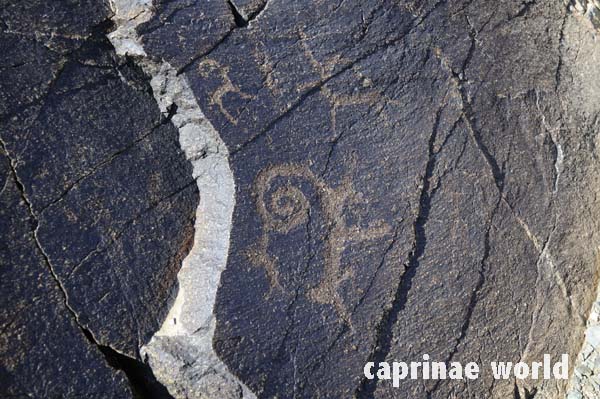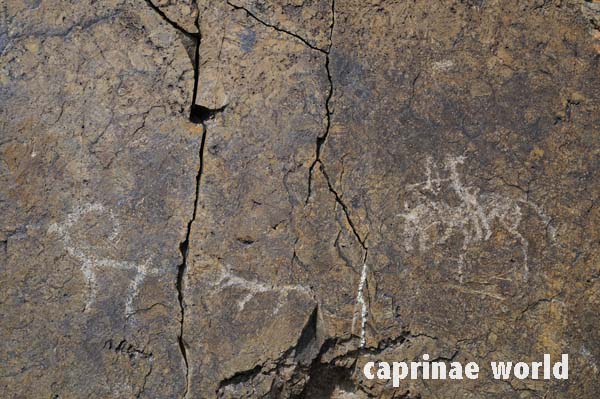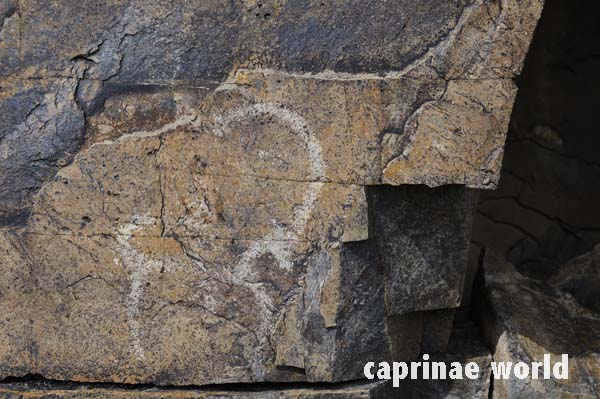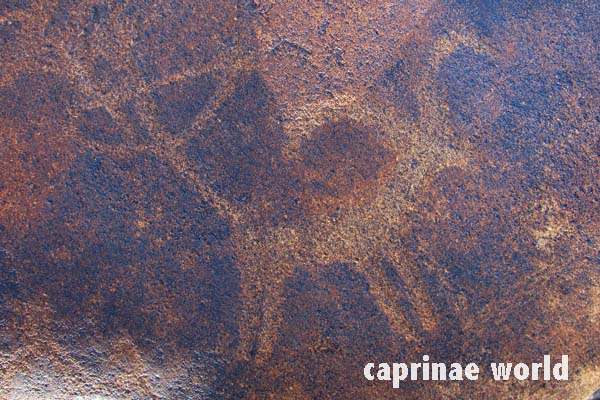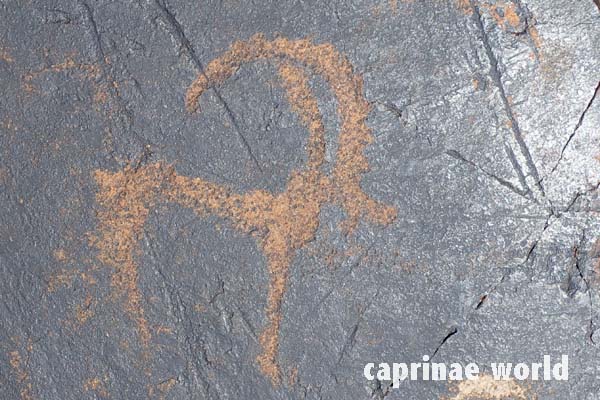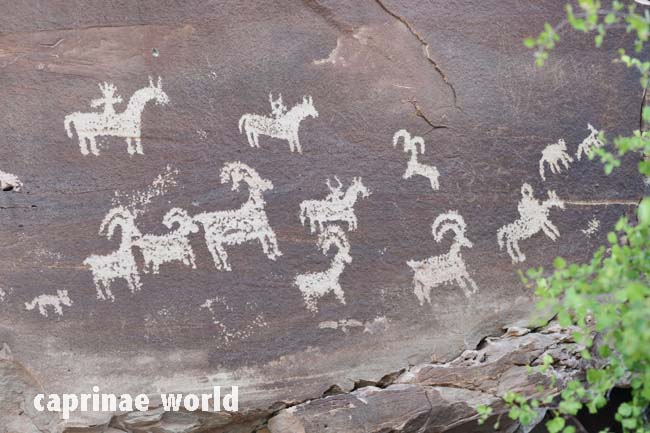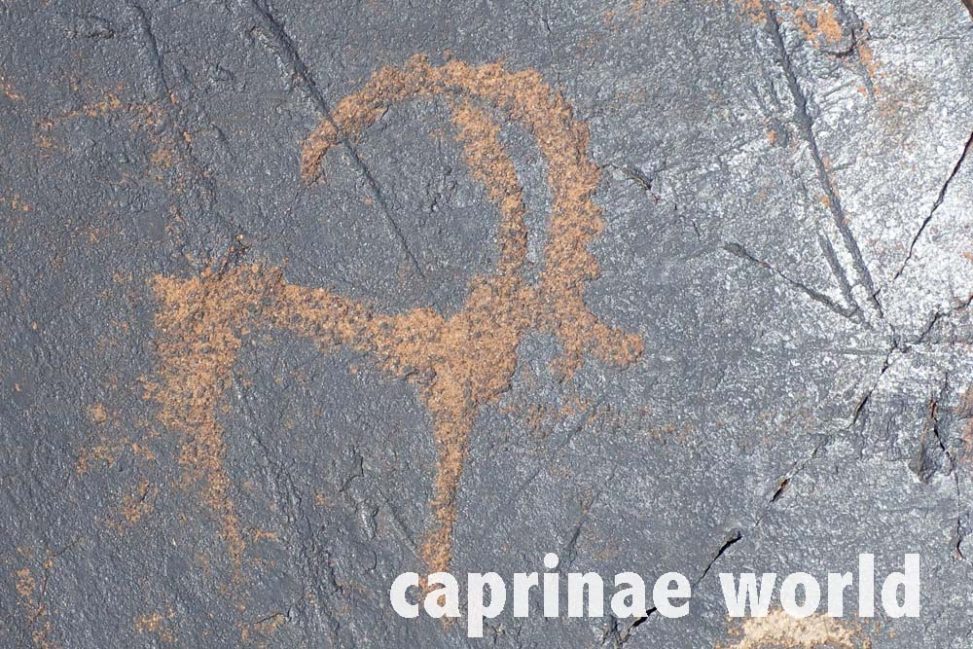In many parts of the world natives have carved portrayals of wild sheep and goats on rock surfaces. It is amazing how one rock art technique has spread so far.
A petroglyph is an image created by removing part of a rock surface by incising, carving, or abrading. The word comes from the Greek prefix petro-, from πέτρα petra meaning „stone“, and γλύφω glýphō meaning „to carve“. Petroglyphs are found worldwide except for Antarctica, and are often associated with prehistoric people.
Many petroglyphs are applied on rocks that are covered with desert varnish. Desert varnish or rock varnish is a brown or black coating found on exposed rock surfaces in arid environments. It forms only on physically stable rock surfaces that are no longer subject to frequent precipitation, fracturing or wind abrasion. The varnish is primarily composed of particles of clay along with iron and manganese oxides. There is also a host of trace elements and almost always some organic matter.
Natives around the world have created petroglyphs by scraping or chipping away the dark varnish to expose the lighter rock beneath. Many hypotheses explain the purpose of petroglyphs, depending on their location, age, and subject matter. Some petroglyph images are thought to have cultural and religious significance. Others may be a simple form of communication.
Petroglyphs depicting caprinae species can probably be associated with hunting – they could be a manifestation of a successful hunt or an indication of the occurrence of the wildlife species that is illustrated.
